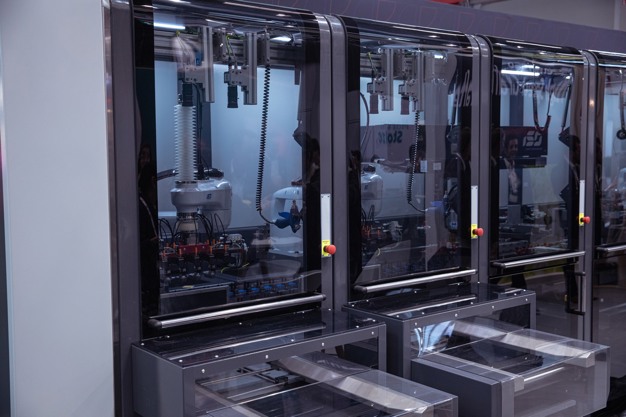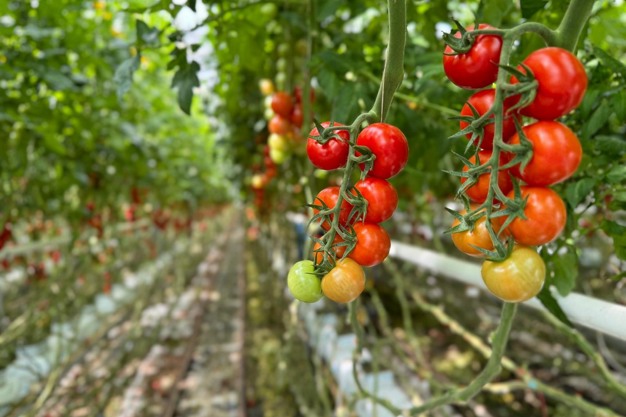As CEO of ISO Horti Innovators, Martin Maasland experiences that the success of (greenhouse) horticulture partly depends on the integration speed of robots and AI. He realizes that his work consists primarily of making the right choices, because the opportunities for robotics and AI in horticulture seem endless. Deploying his R&D team for the most promising opportunities will contribute to a future in which horticulture is more productive, less labour-intensive and sustainable.

Labour costs
Martin: "Sustainability, but also urbanization and climate change are the main reasons for expected growth of cultivation in high-tech greenhouses. Now, roughly 60,000-70,000 ha of high-tech greenhouses are available worldwide, excluding China, and this is expected to grow to >100,000 ha in less than 10 years. Currently, about 2/3 of the existing area of all high-tech greenhouses is in use for vegetables and most of it for growing tomatoes. Rabobank calculated in a 2022 report that a hectare of high-tech greenhouse required EUR 150,000-250,000 in labour costs. Globally, that was about EUR 13 billion in 2022. Rapidly rising labour costs is one side of the coin, availability is the second side of the same coin; therefore, more and more Western countries are relying on labour migration to solve labour shortages."
Migrant workers
Migrant workers are widely used for repetitive and routine work. This comes at the expense of labour productivity. Particularly in horticulture, labour productivity simply has to become much higher in the short term to meet the expected growth of the high-tech greenhouse area. This can be done by, among other things, more automation, robotics and use of AI. But also by using new (mobile) cultivation systems.
"Only then will we as an industry be able to fulfill our ambitions for sufficient, safe and sustainable food. According to recent reports by Rabobank, WUR and AVAG, apart from China, the area of high-tech greenhouses is expected to grow mainly in Europe, North America, Japan and the Middle East. Wages in the aforementioned countries are relatively high and availability of labour relatively limited."

The ISO High Speed Grafter
Automation
ISO Horti Innovators therefore focuses on labour-saving robotics using Vision AI software, with an increasing focus on food. Martin: "The ISO High Speed Grafter is an example of this; the first fully automatic grafting machine in the world. With 4,000 consistent and high-quality plants per hour and operated by just one person. The machine was launched during GreenTech '24 in Amsterdam. At our launching customer Morning Star in North America (tomato production and processing), the quality of the grafts is significantly better, resulting in a 25% higher yield, with a payback time of the machine of less than 2 years. Apart from the significant savings on labour costs, the quality and sustainability is much better because of less waste and reduced water consumption per kilo of tomatoes. I am very proud of this innovation. The roll-out to major propagators around the world will take place in the coming years. The next step is to make the High Speed Grafter suitable for the automatic grafting of various crops."
Given the large area of 25,000-30,000 ha of tomatoes in high-tech greenhouses worldwide, ISO is developing a tomato harvesting robot that was pre-launched during GreenTech. Martin: "Anyone working with tomatoes knows that harvesting them is a delicate, labour-intensive and expensive process. Meanwhile, labour is becoming increasingly scarce and the need for efficiency increases. Therefore ISO introduces an automatic tomato harvesting machine with deep learning technology for consistent assessment and selection of tomatoes and robots with the precision of a human hand. I am trying to be realistic; there are several initiatives on the market and none of these robots are already commercial successes. ISO makes great progress, because of our connection with growers. With almost all of our innovations, ISO has managed to achieve an incredibly short time to market by collaborating with launching customers, in this case Vereijken Kwekerijen. Together with growers, we look at what is possible, making optimal use of state-of-the-art technology and our passionate R&D team."

Martin expects the harvesting robot to replace (almost) all the harvest workers in a tomato greenhouse. "Besides the cost savings, above all, harvest quality will improve with the help of Vision AI. This, of course, also requires adjustments of cultivation companies; you need people responsible for keeping multiple harvesting robots operational. Ultimately, it will all come down to how we handle the increasingly scarce amount of labour worldwide as efficiently as possible."
For more information:
ISO - Horti Innovators
Middelkampseweg 9
5311 PC Gameren
info@isohorti.com
www.isohorti.com
